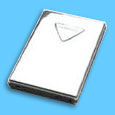 |
 |
| MSDS Topics |
Free Sites | FAQ's | Regulations | Glossary | Software | Suppliers |
| Books | Forum | Poll | Fun stuff | Quiz | Store | |
| MSDS and safety supplies | Search ALL our MSDS info | |||||
 | |||
 |
 |
 |
|
| Title: 10/15/1990 - Hazard Communication Standard. | |
| Record Type: Interpretation | Standard Number: 1910.1200 |
October 15, 1990
Mr. David Wolf
Manager, Business Services
Ohio Hardware Association
Post Office Box 1828
Columbus, Ohio 43216
Dear Mr. Wolf:
Thank you for your letter of August 28, regarding several issues concerning distributors' responsibilities under the Occupational Safety and Health Administration's (OSHA) Hazard Communication Standard (HCS), 29 CFR 1910.1200.
Your letter set forth additional questions to the eight questions raised in your letter of February 12 to our Chicago Regional Office. Our May 16 letter to you (copy enclosed) responded at length to your questions regarding numerous aspects of the HCS requirements for distributors. Since your most recent series of questions raises some of the same issues contained in your February 12 correspondence, this response will provide a narrative discussion of the general concerns raised in your letter.
The standard as currently in effect requires distributors to send or provide material safety data sheets (MSDSs) to downstream users only at the time of an initial shipment of chemical product or when the MSDS is updated or changed to contain new or significant information about the chemical's hazards. Many distributors of hazardous chemicals only sell to commercial accounts - i.e., all their customers are employers who usually buy chemicals in larger quantities, over time, usually at costs below retail. These distributors would always need to have MSDSs for the hazardous chemicals they sell to their commercial account customers and provide them at initial shipment or when the MSDS is updated. They must also post a sign or otherwise inform employees that an MSDS is available.
| Other distributors may, as you point out in your letter, sell to commercial accounts only infrequently. The requirement to provide MSDSs to employers who buy their hazardous chemicals from a retail outlet and who request an MSDS for the purchased chemical is a positive requirement of the standard for these types of distributors if they are transmitting hazardous chemicals to downstream employers. As mentioned in our previous letter to you and in the preamble to the 1987 final rule on Hazard Communication (FR Vol. 52, No. 163, page 31866), "retail distributors will have to assess their product lines, and whether or not they have commercial accounts, to determine whether they must comply with this provision." The preamble narrative also quoted a comment obtained during the notice and comment period from Schneider Hardware of Banksville, Inc., which suggested that the requirements as set forth in the current standard are reasonable: |  Mark the locations of your safety equipment and training materials with signs from Safety Emporium. |
| In your letter you claim that: "a recent series of telephone calls to various OSHA agents and agencies clearly shows that your own people have many different answers to the same question. Only they know what they are talking about because they are OSHA agents!" As pointed out in our last letter to you, the HCS is a performance-oriented rule, and as previously explained, OSHA Compliance Officers are provided guidance and interpretative language in OSHA Instruction CPL 2-2.38B, "Inspection Procedures for the Hazard Communication Standard", for their consideration when enforcing the various provisions of the standard. During the initial rulemaking on the HCS in 1982, OSHA received numerous public comments supporting the Agency's performance-oriented approach to the HCS requirements. Performance-oriented language allows chemical manufacturers and employers maximum flexibility in meeting the intent of the standard and in developing programs suitable to their own individual workplaces. Obviously, the lack of exact specification in any standard's requirements will lead to various approaches in assuring compliance with the requirements of the rule. OSHA strives for uniform enforcement of the HCS nationwide while assuring that employees receive as much information as needed concerning the hazards in their workplaces and that the information provided is presented in a useable, readily accessible form. | (sponsored information) 400,000 MSDS's in your shirt pocket...  with the MSDS Hazard Communication Mobile Desktop from Safety Emporium. |
In its on-going efforts to assure consistent policy and the ready availability of enforcement guidance and information on compliance issues involving the HCS, OSHA has established a Hazard Communication Coordinator in each of the Agency's ten Regional Offices. In the Chicago Regional Office, the Hazard Communication Coordinator is Ms. Ann Williams. You may want to contact her directly by telephone or in writing for any further inquiries you may have regarding this standard. Ms. William's telephone number is: (312) 353-2220.
Thank you for your interest in occupational safety and health.
Sincerely,
Patricia K. Clark, Director Designate
Directorate of Compliance Programs
The official, public domain, OSHA version of this document is available at http://www.osha.gov/pls/oshaweb/owadisp.show_document?p_table=INTERPRETATIONS&p_id=20108&p_text_version=FALSE